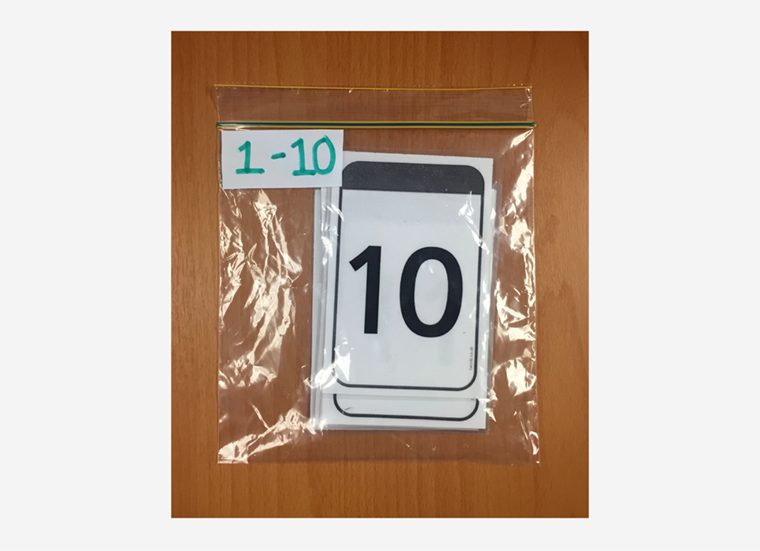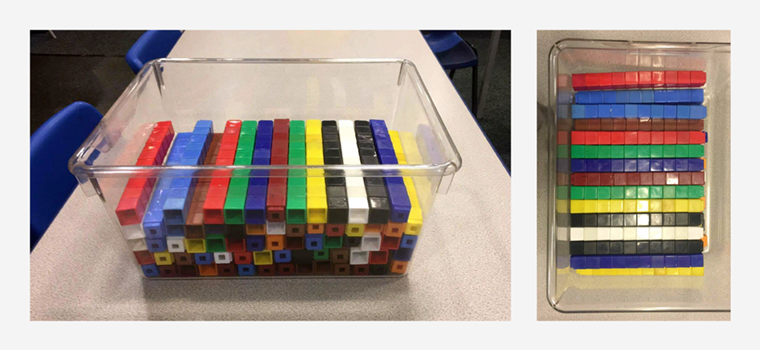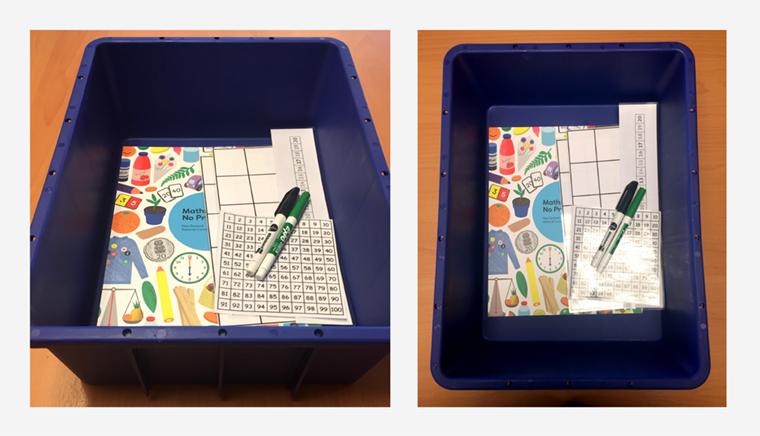5 tips for storing primary teaching resources
Concrete materials are a core part of maths mastery. But let’s face it, gathering up those little pieces isn’t exactly easy. Learn five ways to efficiently store primary teaching resources.
Jerome Bruner’s Concrete, Pictorial, Abstract approach tells us that it doesn’t matter how old a child is. If you’re teaching them a new mathematical idea, it should be introduced in a concrete way.
But in reality, teachers are often time poor. When you have to decide whether to use ten minutes to get out/pack away the primary teaching resources or to teach the lesson, more often than not you’ll choose teaching.
Being organised with your concrete resources and ensuring they’re easy to distribute and pack away can make a big difference to how often you use them.
Here are some of our favourite ways to store primary teaching resources.
1. Store digit card sets in plastic snap lock bags
Digit cards are an essential primary teaching resource in every classroom, no matter what year group you teach. They are useful for all sorts of games and problems like:
- Ordering activities
- Creating equations
- Basic fact games
So what’s the best way to store them? Often they’re stored with rubber bands or thrown into a tray.
Try storing sets of digit cards in plastic snap lock bags. This makes it easy to distribute them for activities and helps to keep them in sets.
Top tip: Write on each bag which cards belong in the bag, for example, cards 1–10.

2. Store Base 10 sets in small individual containers
Base 10 blocks are fundamental for developing learners’ conceptual understanding of place value. They’re also a very time consuming primary teaching resource to work with because each group of children needs so many.
Is there a solution?
Make up sets of tens and ones and store them in small individual containers. Sets of small containers can be easily purchased from a dollar or pound store.
This makes it easy to hand out containers in each lesson. It also ensures you only have as many resources as you need in your classroom, so that valuable maths budget can be spent on other things.
Top tip: The containers are usually a bit small for the hundreds, but these can be passed out separately.

3. Store your linking cubes in sticks of ten
Linking cubes are an essential primary teaching resource for any Year 1 or Year 2 classroom. They are frequently used to make concrete models and represent situations. For example:
I have 3 lemon cupcakes and 7 strawberry cupcakes. How many cupcakes do I have altogether?
Here, children are encouraged to use two different coloured linking cubes to represent the cupcakes, helping learners see that 3 and 7 makes 10 cupcakes. Storing these primary teaching resources in sticks of ten makes for easy distribution and clean up.
Top tip: Add a ‘cube monitor’ to your weekly class duties list. Children can be responsible for putting their sticks back together and a cube monitor can ensure they go back in the box intact.

Transform Your Maths Assessment
Insights — our online assessment tool — gives you instant, powerful data to identify gaps and improve results.

4. Use maths boxes for staple resource storage
There are some primary teaching resources that are useful for helping children explain and prove their thinking around different mathematical concepts.
Save yourself some time and ensure your learners develop a deeper mathematical understanding by creating maths boxes for each table group. Plus, children won’t miss out on learning just because they didn’t have the resources available to them.
Each table group should have a maths box with all the essentials — enough so that each pair has one of each resource. This could include concrete resources like:
- Mini whiteboards
- Ten frames
- 100 square
- Number lines
- Textbooks
These resources will be different depending on the year group. They can also evolve as the year progresses. For example, your learners may only have a number line to 10 to begin with but it may then be swapped out for a number line to 20 later in the year.
Resources can also be added for specific concepts and then taken back out, for example, if the children are learning 3-D shapes, you could add a 3-D shape word mat.
Top tip: Giving class rewards for the tidiest box at the end of the maths lesson is a sure fire way to ensure the boxes are ready to be used the following day!

5. Use magnets to move and store primary teaching resources
Teaching a maths concept by moving primary teaching resources that have been stuck onto a board with tack is a painstaking process. The resource comes off the board and the sticky tack doesn’t. Or resources fall off because they are too heavy.
The solution? Magnets.
Purchase a roll of magnetic strip and stick pieces to the back of teaching resources like linking cubes or Base 10 blocks. This makes it really easy to move the resources around the board.
Top tip: It also allows for the children to come up to the front and use the resources to share their ideas with the class.
As the age old saying goes, ‘begin as you mean to go on.’ Hopefully, these maths teacher top tips for storing primary teaching resources can help to make resources more accessible to use during maths lessons.
Learn more:
The Importance of the CPA approach in the Early Years
How to teach fractions using the CPA approach
Common myths and misconceptions surrounding the Concrete, Pictorial, Abstract (CPA) approach

